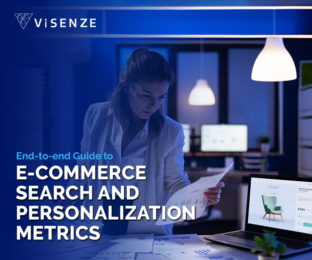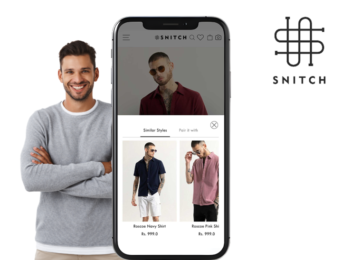Artificial intelligence (AI) in healthcare is the subject of a lot of hype, and for good reason. AI has amazing potential, and that’s partly because it comes in so many different forms. Computer vision, for example, could be used to diagnose disease by scanning and interpreting radiological images with more precision than the human eye. Machine learning, another form of AI, could use data from your smartwatch to enable an early-warning system — alerting you and your physician of an impending seizure or cardiovascular event. But here’s the problem: While AI shows great promise, some of its expected benefits are purely conceptual — and there’s too much focus on computers replacing the expertise of doctors and other healthcare professionals
Another form of AI—natural language processing (NLP) —has been utilized in healthcare for more than a decade with demonstrable return on investment. NLP is a perfect example of how AI can make healthcare better: not by taking the place of humans, but instead enabling them to work at their highest level of certification.
What is NLP?
NLP is a technology that utilizes computational linguistics to read, interpret, and organize unstructured text. NLP technology, combined with clinical content, rules engines and industry-specific AI, can convert complex clinical narratives into actionable insights
NLP organizes unstructured data. In healthcare, those data are most commonly distilled from medical records. While electronic health records (EHRs) provide a rich repository for a person’s medical history, clinical notes often don’t fit neatly into a database. EHRs can contain data in varied forms, from multiple care providers — all without any uniformity of structure. Estimates vary, but some say the volume of unstructured data in healthcare can be as much as 80 percent.
Clinically intelligent NLP, built specifically for healthcare, goes much further than organizing data. It can help improve it. While other NLP may understand medical terminology, clinically intelligent NLP understands context. The ability to “understand” the context and meaning implicit in medical records provides healthcare organizations the capability to thoroughly review millions of unique clinical documents every day. But more than just a thorough review, the technology uncovers gaps in documentation and helps organizations make their records clear, consistent, and conclusive.
Clinically intelligent NLP also enriches structured data — data that are discrete, reportable, or measurable — with information about the patient’s history, symptoms, treatments and more, offering a more complete picture of patient care.
NLP has been used in healthcare to enhance clinical decision support, outcomes analysis, clinical documentation improvement programs, and computer assisted coding.
Delivering value today and tomorrow
In the post-ICD-10, post-Affordable Care Act (ACA) era, complete medical documentation has become an even more critical variable in the revenue equations of health systems, physician offices, and health plans. Accurate, complete clinical documentation is an essential prerequisite not only for accurate claim coding, but also for quality metrics and risk adjustment. The proof points for assessing both quality and risk are found within patient medical records, but two issues persist. First, the quantity of documentation to review can be overwhelming. Second, the expertise to identify the important connections that uncover the gaps in documentation is in short supply.
Clinically intelligent NLP can address both of these challenges. The sheer volume of electronic documentation makes the comprehensive review nearly impossible without the help of automation. By using this technology, health information management and clinical documentation professionals can focus on filling documentation gaps, not on scouring records for errors that may or may not be there. The right NLP can identify the gaps and provide insight on how to fill them.
Next, because clinically intelligent NLP engines can extract and correlate clinical concepts within interrelated medical documentation, it enables the pinpointing of specific diagnoses. This capability is valuable within the revenue cycle; NLP is the backbone of advanced computer-assisted coding and automated clinical documentation improvement technologies. But NLP can even go a step further, because understanding what was documented in a record is only part of what makes NLP so valuable. The most clinically intelligent NLP technologies can identify documentation gaps because they understand what is missing and provide feedback at the point of care.
The potential of NLP hasn’t been fully realized yet, though. With clinically intelligent NLP able to find gaps in documentation, it could conceivably be used to find gaps in care. While technology and data quality can’t yet support such a function, the industry is headed in this direction. As the technology makes its way there, other uses for NLP will emerge. NLP will be employed for clinical validation to assess whether clinical evidence found in medical record documentation supports the assigned diagnosis or treatment. This use is dependent on using NLP to look for gaps in evidence rather than gaps in diagnosis. NLP will also be used to streamline the medical necessity review process, both in the first-level determination by providers and in second-level review by payers.
NLP: An AI technology whose time has come
Today, NLP’s ability to identify documentation gaps helps healthcare organizations maintain and improve revenue integrity. Over the long-term, NLP’s influence on complete and accurate documentation could be a catalyst for continuous improvements in operational efficiency and care quality. In that world, industry professionals get to concentrate on the work that matters: Doctors can focus on patients, documentation specialists can focus on records that need improvement, and medical coders can focus on accurately reflecting services provided. And that’s good news for every stakeholder in healthcare.
Mark Morsch is vice president of technology for Optum, a health information technology and services firm that is part of UnitedHealth Group.
Keep up with latest coverage on digital healthcare by signing up for Internet Health Management News today.






